
Rabbit Anti-APEX2 antibody
AP endonuclease 2; AP endonuclease XTH2; APE 2; APE2; APEX 2; APEX L2; APEX nuclease (apurinic/apyrimidinic endonuclease) 2; APEX Nuclease 2; APEX nuclease like 2; APEXL 2; APEXL2; Apurinic apyrimidinic endonuclease 2; Apurinic/apyrimidinic endonuclease 2
View History [Clear]
Details
Product Name APEX2 Chinese Name 嘌呤嘧啶核酸内切酶2抗体 Alias AP endonuclease 2; AP endonuclease XTH2; APE 2; APE2; APEX 2; APEX L2; APEX nuclease (apurinic/apyrimidinic endonuclease) 2; APEX Nuclease 2; APEX nuclease like 2; APEXL 2; APEXL2; Apurinic apyrimidinic endonuclease 2; Apurinic/apyrimidinic endonuclease 2; Apurinic/apyrimidinic endonuclease like 2; C430040P13Rik; DNA (apurinic or apyrimidinic site) lyase 2; XTH 2; XTH2; APEX2_HUMAN. Research Area Cell biology Chromatin and nuclear signals Immunogen Species Rabbit Clonality Polyclonal React Species Human, Mouse, Rat, Applications WB=1:500-2000
not yet tested in other applications.
optimal dilutions/concentrations should be determined by the end user.Theoretical molecular weight 57kDa Cellular localization The nucleus cytoplasmic Form Liquid Concentration 1mg/ml immunogen KLH conjugated synthetic peptide derived from human APEX2: 301-400/518 Lsotype IgG Purification affinity purified by Protein A Buffer Solution 0.01M TBS(pH7.4) with 1% BSA, 0.03% Proclin300 and 50% Glycerol. Storage Shipped at 4℃. Store at -20 °C for one year. Avoid repeated freeze/thaw cycles. Attention This product as supplied is intended for research use only, not for use in human, therapeutic or diagnostic applications. PubMed PubMed Product Detail Apurinic/apyrimidinic (AP) sites occur frequently in DNA molecules by spontaneous hydrolysis, by DNA damaging agents or by DNA glycosylases that remove specific abnormal bases. AP sites are pre-mutagenic lesions that can prevent normal DNA replication so the cell contains systems to identify and repair such sites. Class II AP endonucleases cleave the phosphodiester backbone 5' to the AP site. This gene encodes a protein shown to have a weak class II AP endonuclease activity. Most of the encoded protein is located in the nucleus but some is also present in mitochondria. This protein may play an important role in both nuclear and mitochondrial base excision repair (BER).
Function:
Function as a weak apurinic/apyrimidinic (AP) endodeoxyribonuclease in the DNA base excision repair (BER) pathway of DNA lesions induced by oxidative and alkylating agents. Initiates repair of AP sites in DNA by catalyzing hydrolytic incision of the phosphodiester backbone immediately adjacent to the damage, generating a single-strand break with 5'-deoxyribose phosphate and 3'-hydroxyl ends. Displays also double-stranded DNA 3'-5' exonuclease, 3'-phosphodiesterase activities. Shows robust 3'-5' exonuclease activity on 3'-recessed heteroduplex DNA and is able to remove mismatched nucleotides preferentially. Shows fairly strong 3'-phosphodiesterase activity involved in the removal of 3'-damaged termini formed in DNA by oxidative agents. In the nucleus functions in the PCNA-dependent BER pathway. Required for somatic hypermutation (SHM) and DNA cleavage step of class switch recombination (CSR) of immunoglobulin genes. Required for proper cell cycle progression during proliferation of peripheral lymphocytes.
Subunit:
Interacts with PCNA; this interaction is triggered by reactive oxygen species and increased by misincorporation of uracil in nuclear DNA.
Subcellular Location:
Nucleus. Cytoplasm. Mitochondrion (Probable). Note=Together with PCNA, is redistributed in discrete nuclear foci in presence of oxidative DNA damaging agents.
Tissue Specificity:
Highly expressed in brain and kidney. Weakly expressed in the fetal brain.
Similarity:
Belongs to the DNA repair enzymes AP/ExoA family.
SWISS:
Q9UBZ4
Gene ID:
27301
Database links:Entrez Gene: Human
Entrez Gene: 77622 Mouse
Omim: 300773 Human
SwissProt: Q9UBZ4 Human
SwissProt: Q68G58 Mouse
Unigene: 659558 Human
Unigene: 440275 Mouse
Product Picture
Lymph node(Mouse) Lysate at 40 ug
Primary: Anti- APEX2 (SL6587R)at 1/300 dilution
Secondary: IRDye800CW Goat Anti-Rabbit IgG at 1/20000 dilution
Predicted band size: 57kD
Observed band size: 57kD
Sample:
Lane 1: Mouse Cerebrum tissue lysates
Lane 2: Rat Cerebrum tissue lysates
Lane 3: Human A549 cell lysates
Lane 4: Human U87MG cell lysates
Lane 5: Human A431 cell lysates
Lane 6: Human MCF-7 cell lysates
Lane 7: Human HeLa cell lysates
Lane 8: Human LOVO cell lysates
Primary: Anti-APEX2 (SL6587R) at 1/1000 dilution
Secondary: IRDye800CW Goat Anti-Rabbit IgG at 1/20000 dilution
Predicted band size: 57 kDa
Observed band size: 50 kDa
Paraformaldehyde-fixed, paraffin embedded (Mouse kidney); Antigen retrieval by boiling in sodium citrate buffer (pH6.0) for 15min; Block endogenous peroxidase by 3% hydrogen peroxide for 20 minutes; Blocking buffer (normal goat serum) at 37°C for 30min; Antibody incubation with (APEX2) Polyclonal Antibody, Unconjugated (SL6587R) at 1:400 overnight at 4°C, followed by operating according to SP Kit(Rabbit) (sp-0023) instructionsand DAB staining.Paraformaldehyde-fixed, paraffin embedded (Mouse brain); Antigen retrieval by boiling in sodium citrate buffer (pH6.0) for 15min; Block endogenous peroxidase by 3% hydrogen peroxide for 20 minutes; Blocking buffer (normal goat serum) at 37°C for 30min; Antibody incubation with (APEX2) Polyclonal Antibody, Unconjugated (SL6587R) at 1:400 overnight at 4°C, followed by operating according to SP Kit(Rabbit) (sp-0023) instructionsand DAB staining.Tissue/cell: rat brain tissue; 4% Paraformaldehyde-fixed and paraffin-embedded;
Antigen retrieval: citrate buffer ( 0.01M, pH 6.0 ), Boiling bathing for 15min; Block endogenous peroxidase by 3% Hydrogen peroxide for 30min; Blocking buffer (normal goat serum,C-0005) at 37℃ for 20 min;
Incubation: Anti-APEX2 Polyclonal Antibody, Unconjugated(SL6587R) 1:200, overnight at 4°C, followed by conjugation to the secondary antibody(SP-0023) and DAB(C-0010) staining
References (0)
No References
Bought notes(bought amounts latest0)
No one bought this product
User Comment(Total0User Comment Num)
- No comment
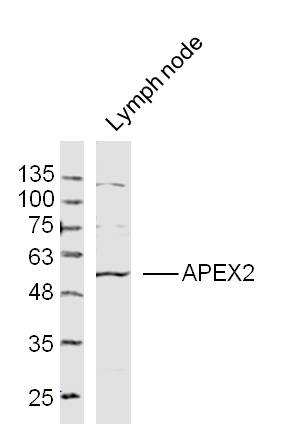
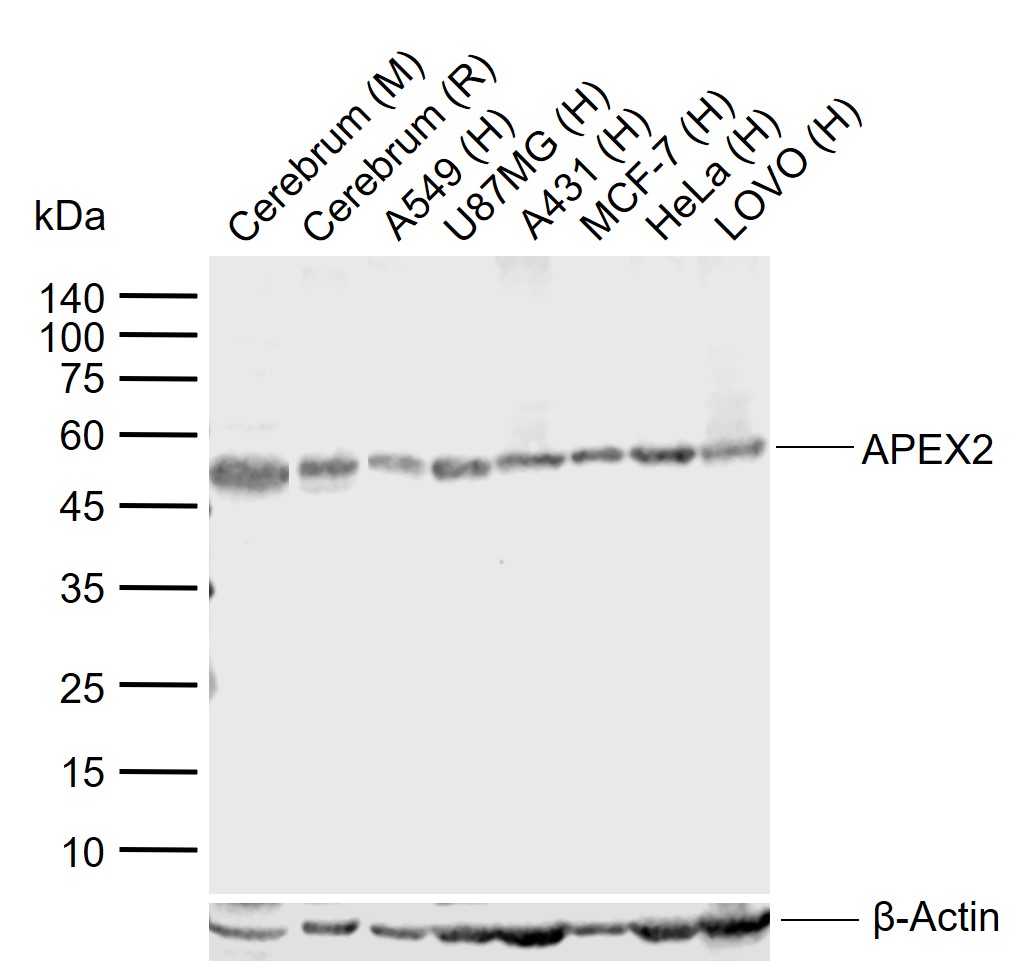
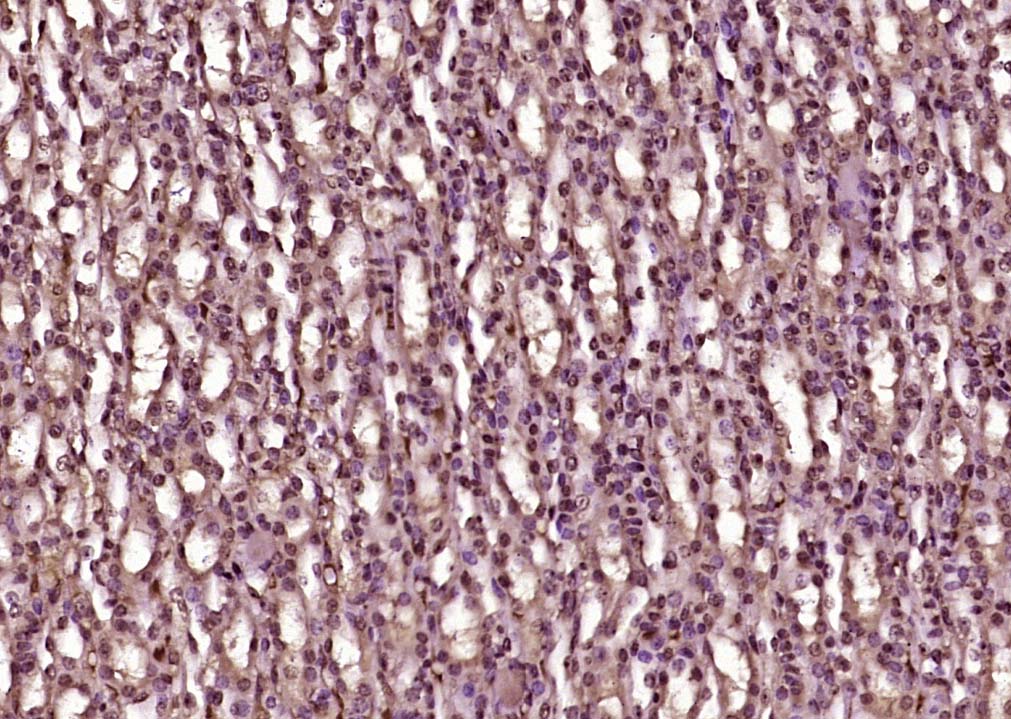
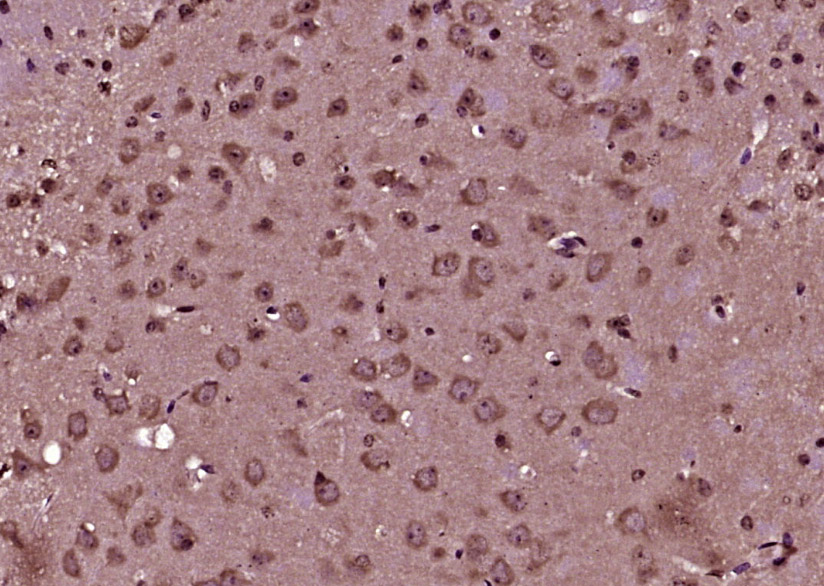
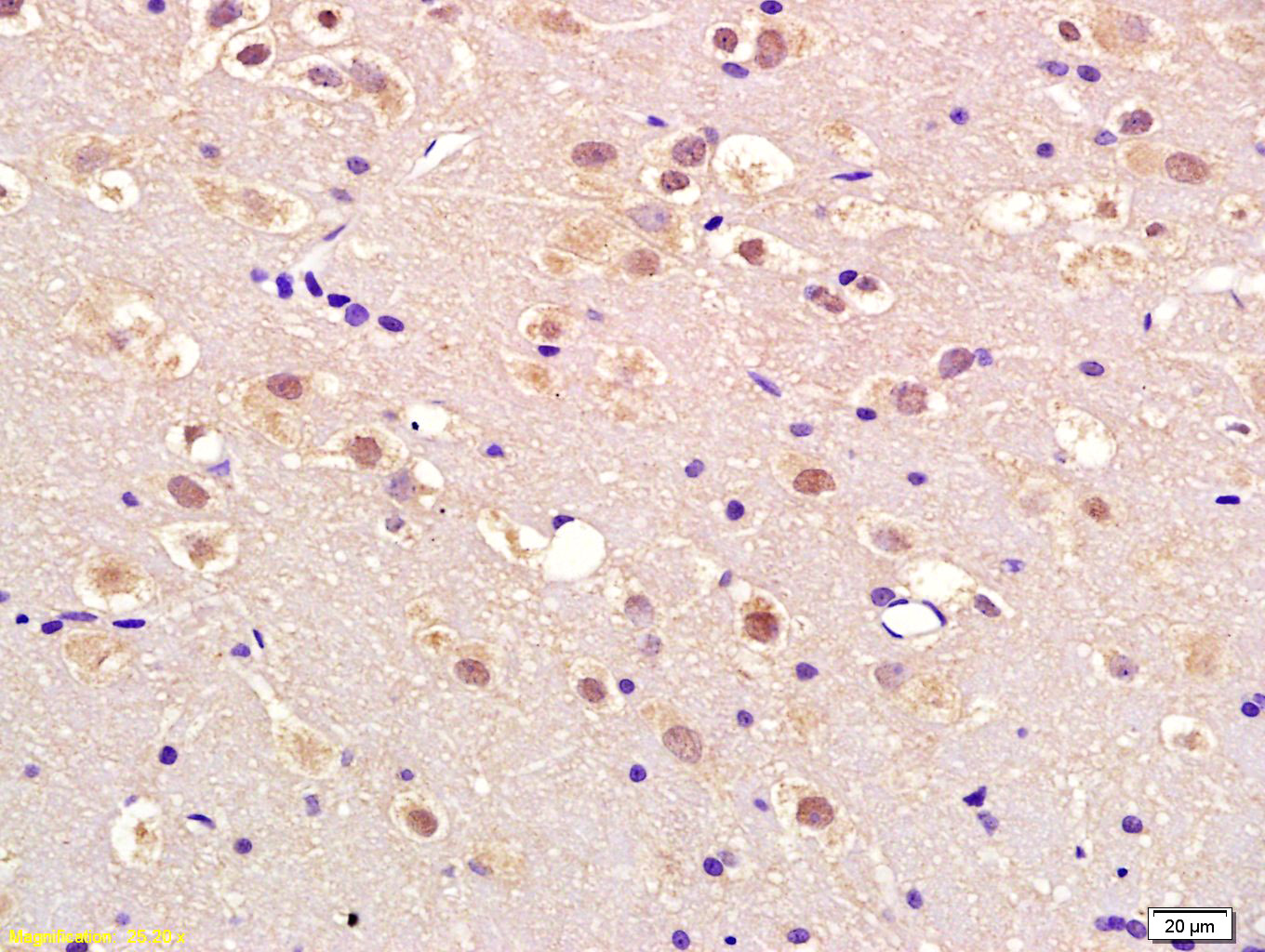


 +86 571 56623320
+86 571 56623320
 +86 18668110335
+86 18668110335

